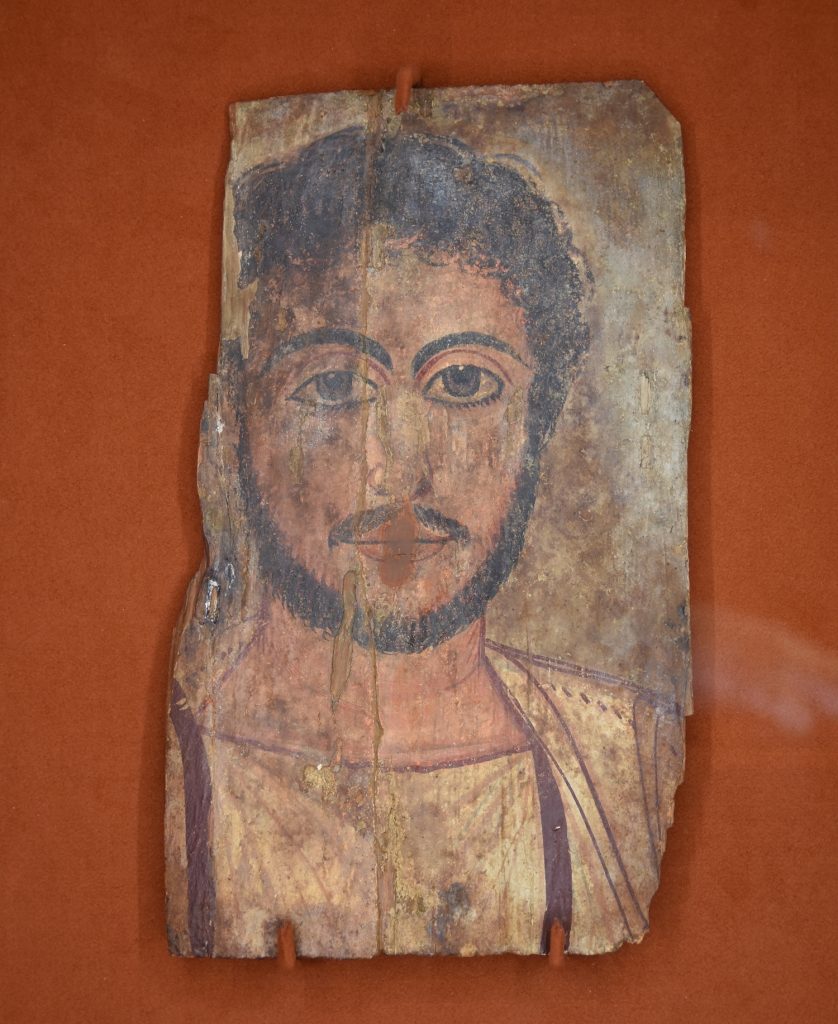Fayyum Portrait from Egypt – An ancient face
APRIL 2019
About 1800 years ago somewhere in Egypt governed by Romans, people bid their farewell to a man who had had large eyes, a sensual mouth, a fairly narrow nose and a moustache during his lifetime. His curly hair was cut short. His cheeks and chin were framed by a trimmed beard. We do not know, who man was, how he spent his life nor how he died, but the serious look on his face can still be recognized on the portrait painted on wood. The portrait is comprised in Gösta Serlachius Fine Arts Foundation’s collection.
Fayum mummy portraits are fairly realistic portraits, which were placed on the face of the deceased person. Portraits were manufactured in Egypt during the Roman era since the second century until the end of the mid-4th century. The name Fayum has been derived from an Egyptian region by the same name, in which most of these portraits have been found.
The mummy portrait ended up to the Gösta Serlachius Fine Arts Foundation’s collection in 2012 when the Foundation acquired the 14-item Egypt collection of small objects collected by Harry Kivijärvi. The artwork has been painted with tempera colours on wood on the 3rd century. Its measurements are 34 cm x 21 cm. Fayum portrait is on show in the exhibition Time of Stone at Serlachius Museum Gösta until 14 April 2019.
Fayum portraits formed an interesting chapter in the art history. They were prepared during a multi-cultural era, when the ancient Egyptian culture was mixed at first with Hellenic and after that with Roman culture. Mummy portraits represent Greco-Roman style of painting. They were the only examples of artworks that the Hellenes painted on wood, which made them particularly important – the mummy portraits were preserved owing to Egypt’s dry air. No other examples have been found anywhere.
The persons depicted in mummy portraits have been dressed in Roman attire, and their hair and accessories followed the Roman empire’s fashion. Their face was often lit by one source of light which created realistic shadows. Liveliness in our man’s gaze is created by a small dot of light reflected at the upper edge of the pupil of his eye. The brushstrokes of the artist can clearly be recognised at his hair and beard.
The purpose of the mummy portraits had totally an Egyptian basis although their style was Greek. The Romans had traditionally burned their deceased but Egyptians, who believed in life after death, upheld their mummifying process also during the Roman era. Most likely, this portrait of our dark-skinned man has been painted already during his life time. It was attached to the shrouds enfolded around his dead body posthumously. His close ones may have found comfort in the picture and in their faith in the continuation of life that it represented.
Laura Kuurne
Head Curator


